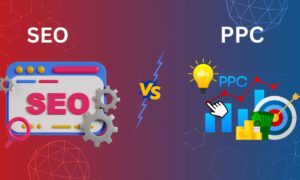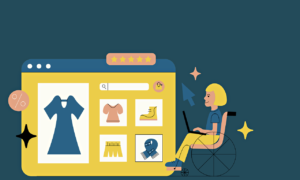Non-profits often have a difficult time securing funds to keep their processes running smoothly. As a result, many are forced to cut corners and work inefficiently in order to make ends meet, putting a greater strain on their workforce.
One of the hardest hit areas is undoubtedly technology, as upgrading hardware and software can be expensive. However, in an increasingly digital world, non-profits that fail to use technology to their advantage may struggle to survive and continue providing their valuable services to society.
SaaS, a type of cloud-based software, could help non-profits to embrace new technology more easily. It essentially helps organizations access the software and apps they need from any mobile or computer that’s connected to the internet. This means that everything from non profit accounting software to databases and CRM can be at the fingertips of both remote and on-site workers.
But while SaaS might sound useful, what makes it so special? Here are some of the benefits this software may afford non-profits:
Few upfront costs
Because cost is such an important consideration for most non-profits, SaaS is particularly appealing as it doesn’t require much investment to get set up and running. If your non-profit is used to using outdated operating systems and software, you may be used to paying large sums of money for new packages.
As a cloud-based software solution, SaaS is typically available through a subscription payment model. This means that non-profits can access everything they need instantly by simply making a small monthly payment. Some SaaS providers may even offer a reduced monthly payment when organizations commit to a year or more.
However, non-profits that aren’t sure how long they’ll need SaaS, or whether it will be affordable for them a year down the line, do have the option of paying from month to month and canceling at any time.
Secure
Digital security is a huge concern for organizations around the world, particularly those that may be storing the sensitive data of others. Sadly, non-profits may be more likely to be targeted by hackers, especially if they’re small to medium-sized organizations. This is largely because many non-profits do have substandard security, making it easier for cybercriminals to access their information.
SaaS software helps to keep sensitive data safe through a variety of different security measures. Some of these include:
- Data Encryption: Even if cybercriminals do manage to access your SaaS cloud, if your data is encrypted, they won’t be able to understand or extract any of it. Encryption is essential if your non-profit stores sensitive information about its employees and volunteers or the people it works with and helps.
- Multi-Factor Authentication: Most e-mail providers and online banking services now enforce multi-factor authentication. This means that employees logging into new devices will be required to provide evidence that it’s really them accessing the cloud. This may mean inputting a code sent to a mobile device as well as a password.
SaaS also keeps data safe from natural disasters and hard drive failures, as information is stored on online servers rather than in a physical location. What’s more, by operating via several, separate data centers, SaaS will still be able to provide you with access to your data should one server malfunction.
Easy updates
Software that’s installed onto the desktop of a computer often requires users to install or approve updates manually – and these updates aren’t always free. Not only does this impact a non-profit’s budget, but it may take time out of an employee’s day and could even lead to security issues if updates are put off for a long time. Eventually, software may no longer be supported by updates, as new versions of this software will be released, forcing non-profits to either continue working with a substandard operating system or invest even more money into technology.
Because SaaS operates in the cloud and is paid as a subscription every month, non-profits will always have access to the latest version of that software at no extra cost. Furthermore, updates will usually come into effect automatically, so there’s no disruption to the working day.
Flexible
SaaS can be used with just about any type of software, whether that’s accounting, membership databases, or reporting systems. This makes it perfect for non-profits that may be using systems that aren’t commonly seen in other commercial organizations, such as donation tracking software. SaaS also makes it more likely that these different systems will be able to work together seamlessly. Cloud-based solutions are usually more compatible with one another, whereas desktop software can sometimes be more difficult to merge.
SaaS can also be scaled relatively easily, so growing non-profits can quickly upgrade their packages when they need more space in the cloud or additional functions. These packages can be downgraded again if a non-profit hits a rough patch or no longer requires certain features. This can save organizations a great deal of money, as instead of having to purchase multiple different types of software, they can easily change the one they already have to suit their needs in exchange for a small increase in the monthly fee they already pay.
User friendly
Often designed with the user in mind, most SaaS solutions are simple to use and require minimal training. This makes it easier to onboard employees and saves non-profits from having to take on IT professionals to walk staff through a new system. Most SaaS systems come with a help section and even short instructional videos that can be shown to new volunteers or temporary workers. More traditional software is typically harder to grasp for new users, as lots of systems were designed without giving much thought to the needs of the user.
SaaS and the future of non-profits
No matter the sector they’re based in, non-profits must continue to embrace changes in technology to enable them to serve their communities to the best of their ability. SaaS is one of the easiest ways they can do this, as not only will their work be more efficient, but they’ll be saving money – allowing them to direct funds to the places that matter the most.


































